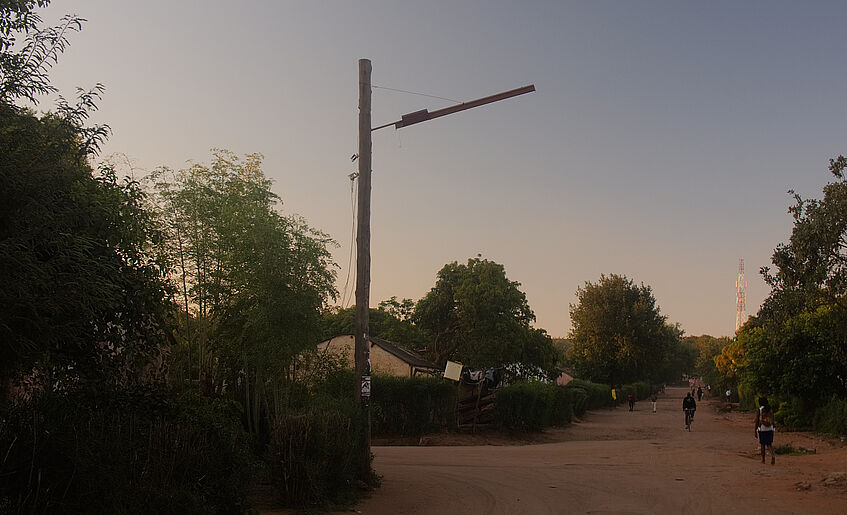Livingstone (Zambia)

Colonial streetlights in Libuyu Compound, Livingstone, 07.05.2017,@ Carl Bodenstein
Livingstone (Zambia)
Zambian housing policy was launched while (as a British colony) it was still called Northern Rhodesia. It continued in the context of the Central African Federation and was taken over by the independent state in 1964. A large urban concentration arose on the Copperbelt. The housing legislation of 1948 and subsequent years imposed obligations on large employers to accommodate their employees. Companies either built houses on their own land or subsidised rents. In their policy they were inspired by the policy of the Union Minière in Katanga. Unequal subsidisation (i.e. accommodation including furniture for privileged workers) combined with generally low wages, prompted friction and social differentiation. While the Copperbelt has attracted major research attention from urban anthropologists who became highly influential in shaping the narrative about Africans in towns, the study of Livingstone remains neglected.
An analysis of housing in Livingstone may therefore be a point of entry to a critical review of the more established narrative of Zambian urbanisation. As opposed to workers from Thika or Lubumbashi, workers in Livingstone belonged more to the aspiring middle classes. They worked as clerks, white-collar workers, industrial workers, shop-assistants, gardeners of administrators or domestics in expatriate households as well as self-employed craftsmen and traders. The comparatively high level of education, the slowly developing tourism industry, the level of political awareness and the flourishing associational life made Livingstone exceptional when compared to other towns.
- Kirsten Rüther and Carl Bodenstein are carrying out the Livingstone case study.
